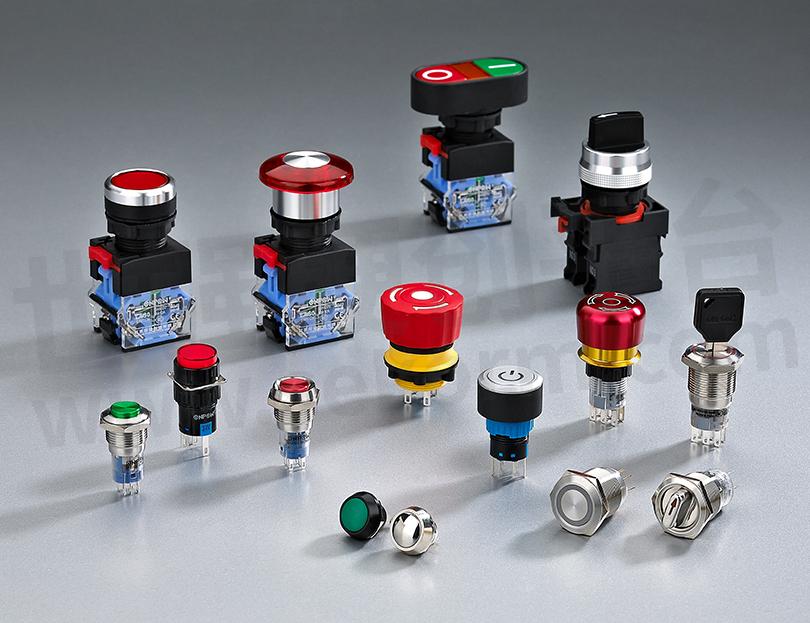Multi-Function Push Button Switch: Opening up a World of Infinite Possibilities

This article introduces the Push Button Switch: unleashing the power of innovation.
In the world of electrical engineering and circuits, nothing embodies simplicity and versatility more than the humble push button switch. Push button switches have a simple design and a wide range of applications, allowing for the seamless operation of countless devices, appliances and equipment. In this blog, we will delve into the mechanics of push button switches, emphasizing their important role in circuit switching and their importance in the industry. Learn how this simple yet powerful component acts as a catalyst to drive innovation forward.
Push-button switches, also commonly called buttons, are the epitome of simplified engineering. These switches use buttons to traverse the transmission mechanism and ultimately connect or disconnect moving and static contacts to facilitate circuit switching. Unlike complex switches, push button switches use the one-touch principle, allowing users to easily activate or deactivate a circuit with just one press. Buttons have a simple structure and are easy to use, so they are widely used in various industries from consumer electronics to automotive engineering.
Push button switches are an important component when reliable, convenient power control is required. An example of its application is in home automation systems, where push-button switches are used to control lighting and appliances. Likewise, in the automotive industry, push-button switches are used to activate various functions such as window controls, air conditioning, and engine start/stop functions. The versatility of push-button switches extends into the industry, where they are used in machinery control panels, elevators, and emergency stop systems, ensuring safety and ease of operation.
Quality and durability should be your top considerations when choosing the right push button switch. High-quality push button switches are designed to withstand repeated use and heavy-duty applications while maintaining their performance over the long term. Additionally, buttons come in a variety of styles and designs, including lighting options for enhanced visibility. Whether you need a momentary or latching action switch or a weather-sealed or tamper-resistant switch, there are a variety of options to meet your specific needs.
Push button switches have revolutionized the field of electrical equipment, providing a simple and effective method of circuit control. Its versatility and ease of use make it an important part of multiple industries. Whether you are an electrical engineer, a homeowner, or an automotive enthusiast, push button switches will undoubtedly play an important role in your daily life. Embrace the power of innovation and unlock a world of possibilities with this remarkable and practical technological advancement.
In summary, push button switches represent a remarkable combination of simplicity, reliability, and versatility, driving technological advancement and ensuring convenience in every area. Choose quality push button switches to get the advantage of a powerful and efficient circuit control mechanism.

- +1 Like
- Add to Favorites
Recommend
- Choosing a Push Button Switch: A Simple Guide
- How to Wiring A 3 Pins Push Button Switch
- What Is A Push Button Switch Used For?
- ONPOW Small Push Button Solutions– 12mm Push Button Switch GQ12B, GQ12-A and ONPOW6312
- Marine Push Button Switch Top Choice – ONPOW61 Serise Push Button Switch in 316 Stainless Steel Housing
- What Does IP40/IP65/IP67/IP68 Mean in Push Button Switch?
- Momentary Push Button Switch vs. Latching Push Button Switch: What’s the Difference?
- ONPOW Showcased the Push Button Switch Solutions at HANOVER MESSE 2024
This document is provided by Sekorm Platform for VIP exclusive service. The copyright is owned by Sekorm. Without authorization, any medias, websites or individual are not allowed to reprint. When authorizing the reprint, the link of www.sekorm.com must be indicated.






























































































































































































































































































































































































































































































































































































































































































































































































































































































